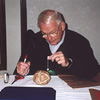The COSPIN instrument image page

This is a photograph of the Dual Anisotropy Telescopes (ATs). The ATs are outlined with a yellow line. The LET (Low Energy Telescope) is also shown outlined with a green circle. The cover shown in this picture covering the LET was opened after launch. The bottom third of the box actually contains the data processing unit (DPU). The DPU collects measurements from all of the telescopes on COSPIN and sends them to the spacecraft data system.
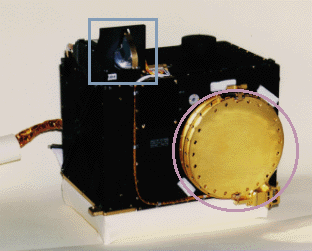
This is a photograph of the High Energy Telescope (HET) and the High Flux Telescope (HFT). The HFT is the small fan-shaped object on top of
the box (outlined in blue). The HET is outlined in purple. You can see that the HFT has a bronze strip covering it and the HET has a large, circular gold cover on it. Both of these covers were opened after launch.
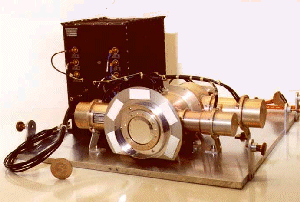
This is a photograph of the Kiel Electron Telescope (KET).
These are photographs of some of the sensors that make up the COSPIN instrument.
Images were adapted from ESA (European Space Agency) images
 Ulysses Instruments
Ulysses Instruments
You might also be interested in:
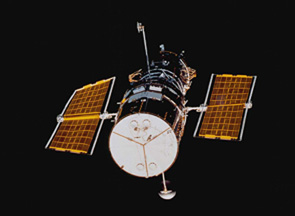
The Hubble Space Telescope (HST) is really neat! It was first launched in 1990, but scientists started building it in the 1970's! We have found all kinds of objects like stars, nebulae and galaxies. The
...more
Apollo 11 was the first mission that landed a person on the moon. On July 16, 1969, the U. S. rocket Saturn 5 was launched carrying the lunar landing module Eagle. The Eagle was released and it reached
...more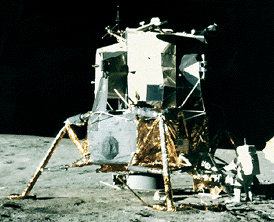
Apollo 12 was launched on Nov. 14, 1969 and arrived at the Moon three days later. Astronauts Charles Conrad and Alan Bean descended to its surface, while Richard Gordon remained in lunar orbit aboard the
...more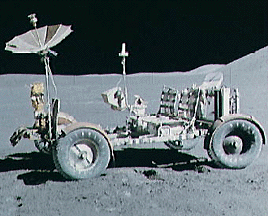
Apollo 15 marked the start of a new series of missions from the Apollo space program, each capable of exploring more lunar terrain than ever before. Launched on July 26, 1971, Apollo 15 reached the Moon
...more
NASA chose Deep Impact to be part of a special series called the Discovery Program. This program is for cheap, scientific projects. In May 2001, NASA said it was ok to start with mission development for
...more
Galileo was a spacecraft that orbited Jupiter for eight years. It made many discoveries about Jupiter and its moons. Galileo was launched in 1989, and reached Jupiter in 1995. The spacecraft had two parts.
...more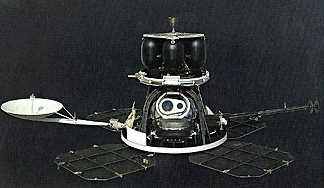
During 1966 through 1967, five Lunar Orbiter spacecrafts were launched, with the purpose of mapping the Moon's surface in preparation for the Apollo and Surveyor landings. All five missions were successful,
...more
 This is a photograph of the Dual Anisotropy Telescopes (ATs). The ATs are outlined with a yellow line. The LET (Low Energy Telescope) is also shown outlined with a green circle. The cover shown in this picture covering the LET was opened after launch. The bottom third of the box actually contains the data processing unit (DPU). The DPU collects measurements from all of the telescopes on COSPIN and sends them to the spacecraft data system.
This is a photograph of the Dual Anisotropy Telescopes (ATs). The ATs are outlined with a yellow line. The LET (Low Energy Telescope) is also shown outlined with a green circle. The cover shown in this picture covering the LET was opened after launch. The bottom third of the box actually contains the data processing unit (DPU). The DPU collects measurements from all of the telescopes on COSPIN and sends them to the spacecraft data system.
 This is a photograph of the High Energy Telescope (HET) and the High Flux Telescope (HFT). The HFT is the small fan-shaped object on top of
the box (outlined in blue). The HET is outlined in purple. You can see that the HFT has a bronze strip covering it and the HET has a large, circular gold cover on it. Both of these covers were opened after launch.
This is a photograph of the High Energy Telescope (HET) and the High Flux Telescope (HFT). The HFT is the small fan-shaped object on top of
the box (outlined in blue). The HET is outlined in purple. You can see that the HFT has a bronze strip covering it and the HET has a large, circular gold cover on it. Both of these covers were opened after launch.
 This is a photograph of the Kiel Electron Telescope (KET).
This is a photograph of the Kiel Electron Telescope (KET).



